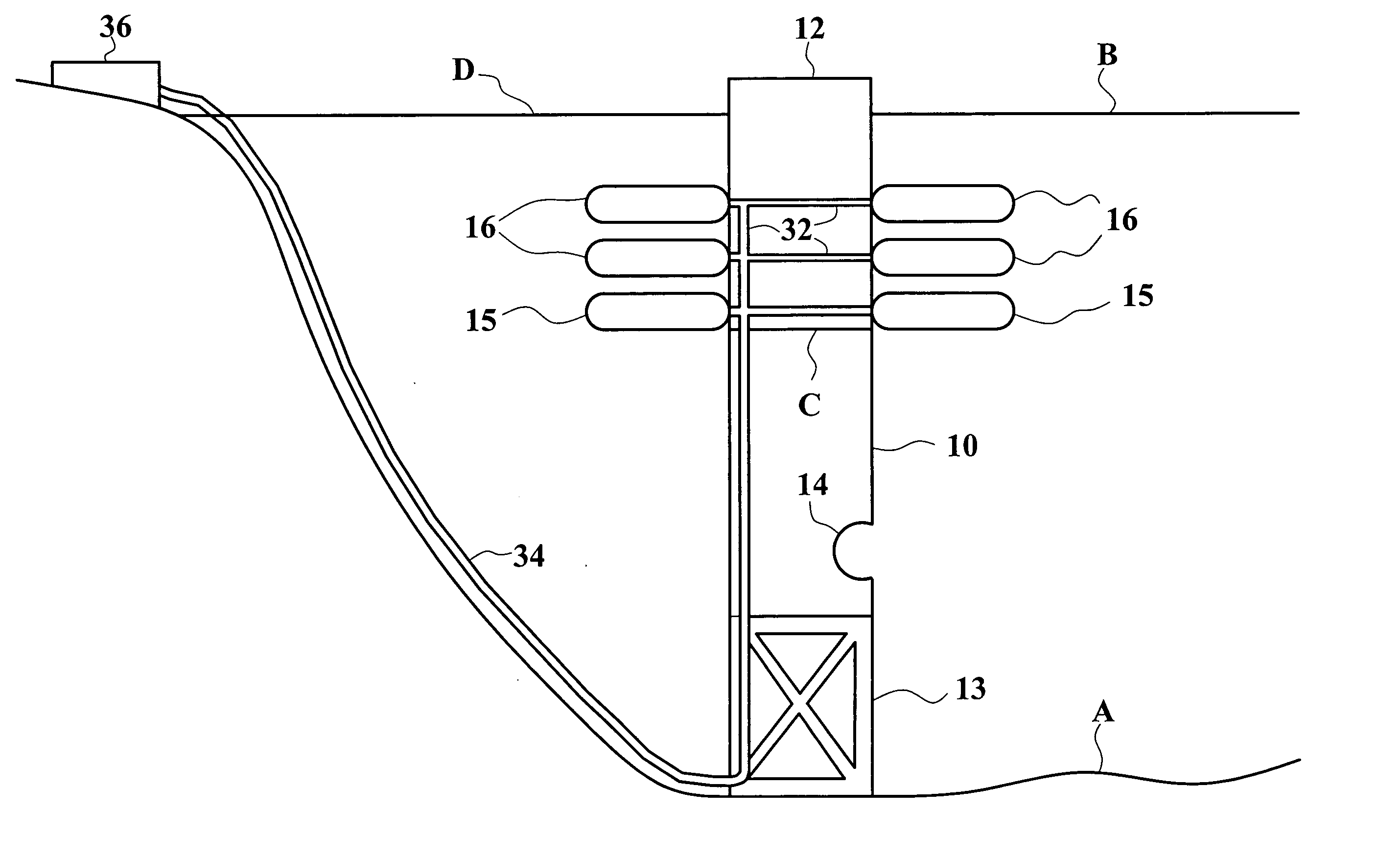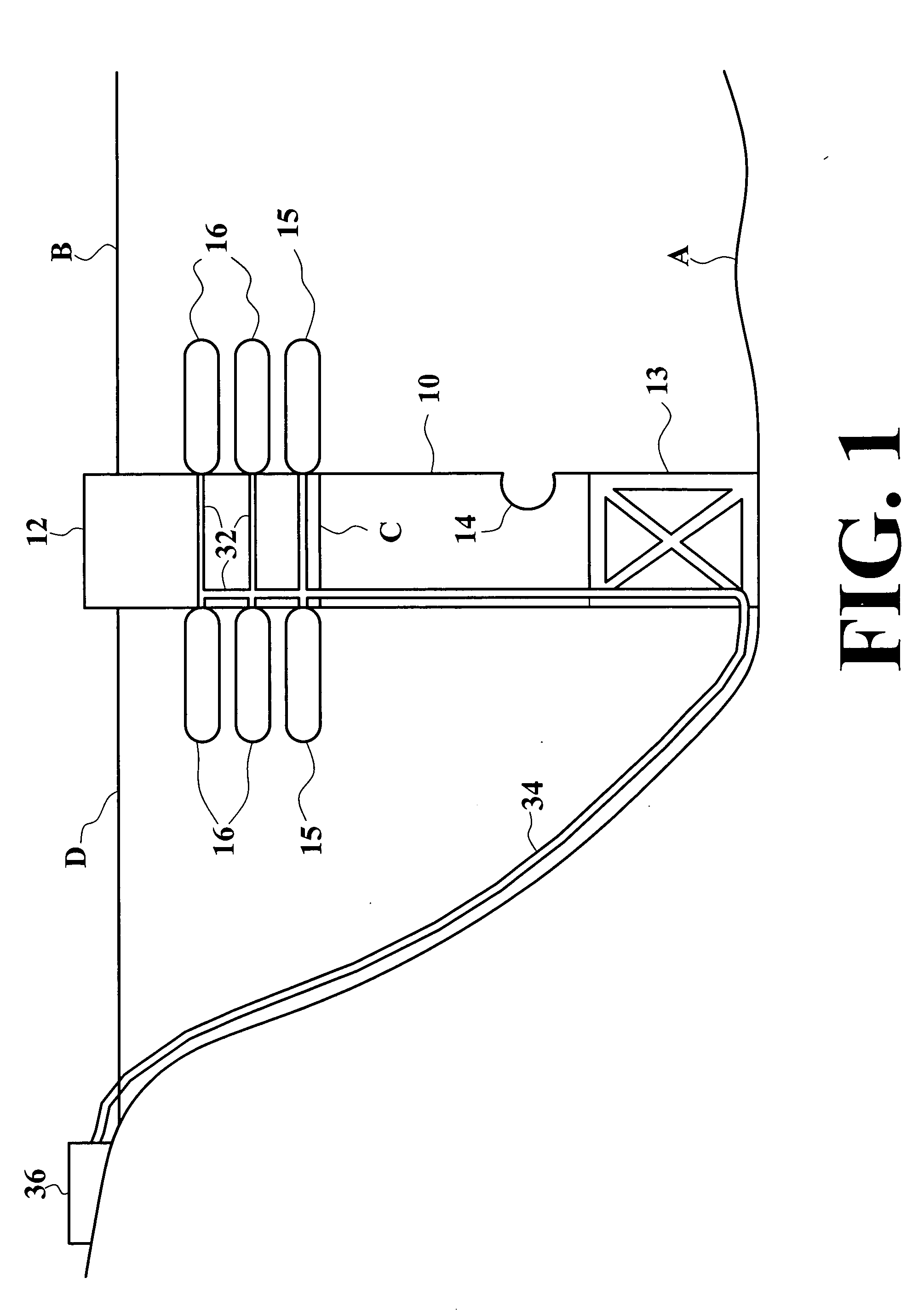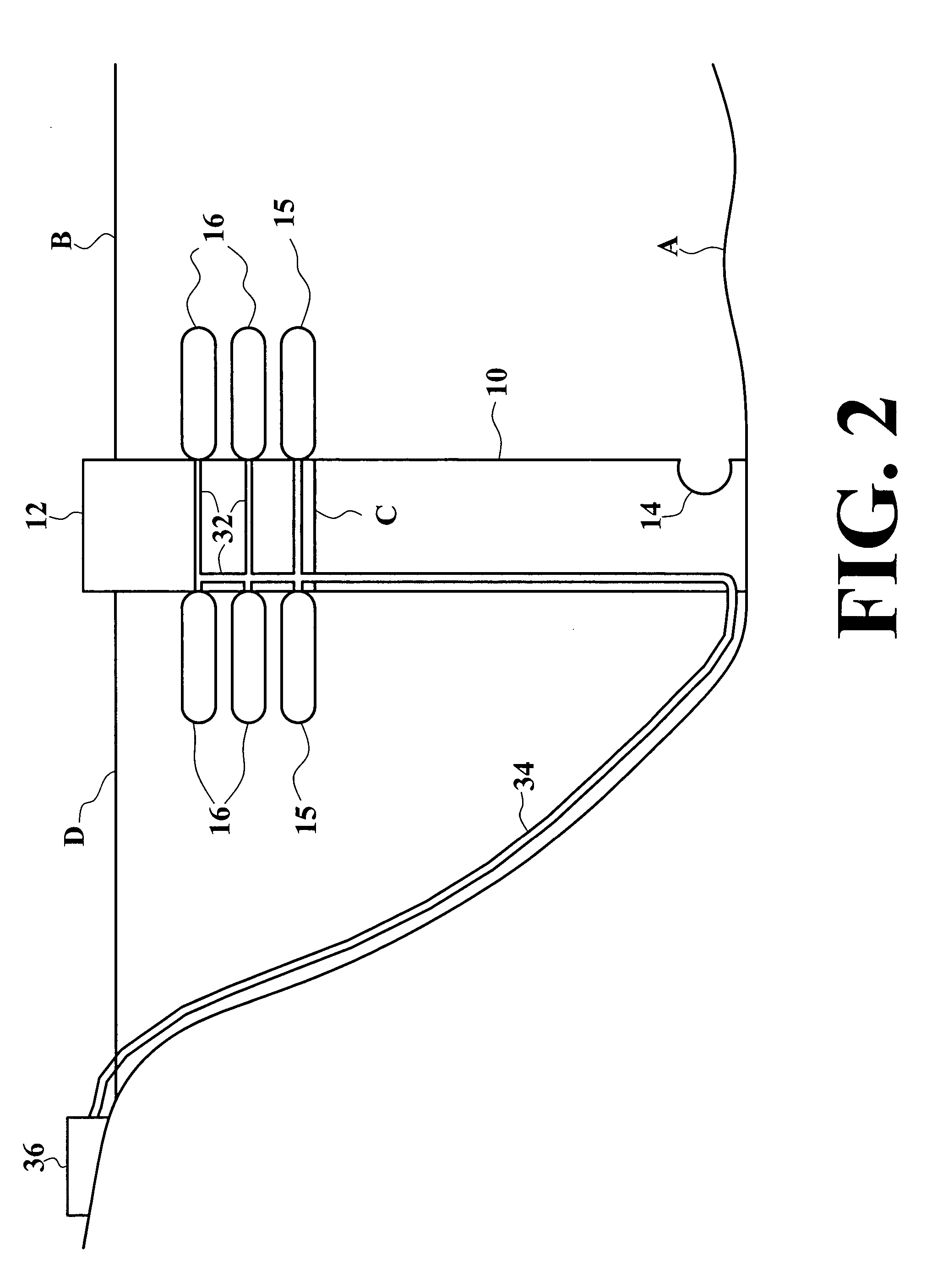Seawater pressure-driven desalinization method using a gravity-driven brine return
a technology of gravity-driven desalinization and seawater, which is applied in water cleaning, multi-stage water/sewage treatment, separation processes, etc., can solve the problems of environmental pollution, pollution of air, water and land, and high cost of desalinization
- Summary
- Abstract
- Description
- Claims
- Application Information
AI Technical Summary
Benefits of technology
Problems solved by technology
Method used
Image
Examples
Embodiment Construction
[0040] The present invention is an apparatus and method of removing salt from seawater to produce potable fresh water. It may be used in either the oceans or in inland bodies of salt water.
[0041] FIG. 1 is a schematic environmental front elevational view of the first preferred embodiment of the invention. A large metal cylinder 10, with an open top end 12 and an bottom opening 14, rests on platform 13 which is anchored to the floor A of the ocean B (or inland sea) offshore. (Alternatively, a tube or channel of a different shape and / or with a plurality of top openings and / or a plurality of bottom openings may be used. Also, the apparatus can be supported by flotation devices, or by cables attached to ships, rather than resting on the sea floor.) Bottom pressure hulls 15 are removably attached to the side of the cylinder, above or below the equilibrium level C of brine in the cylinder. When greater production capacity is needed, upper pressure hulls 16 are added.
[0042] FIG. 2 is a sch...
PUM
| Property | Measurement | Unit |
|---|---|---|
| pressure | aaaaa | aaaaa |
| pressure | aaaaa | aaaaa |
| concentration | aaaaa | aaaaa |
Abstract
Description
Claims
Application Information
 Login to View More
Login to View More - R&D
- Intellectual Property
- Life Sciences
- Materials
- Tech Scout
- Unparalleled Data Quality
- Higher Quality Content
- 60% Fewer Hallucinations
Browse by: Latest US Patents, China's latest patents, Technical Efficacy Thesaurus, Application Domain, Technology Topic, Popular Technical Reports.
© 2025 PatSnap. All rights reserved.Legal|Privacy policy|Modern Slavery Act Transparency Statement|Sitemap|About US| Contact US: help@patsnap.com



